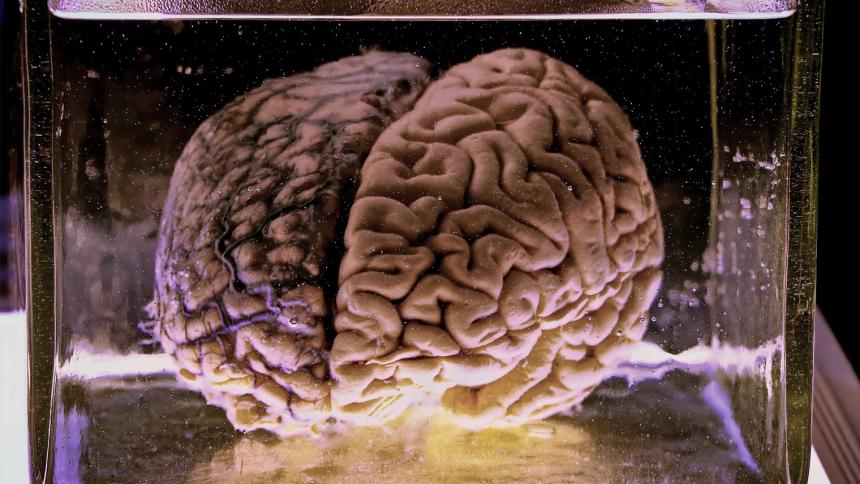
What happened to Ted Bundy's brain after his execution?
It’s well-known that Ted Bundy was different from the rest of us. The average member of society is not prone to killing multiple people without a shred of emotion. Thankfully, serial killers of Bundy’s ilk are an incredibly rare breed. Being such macabre outliers is what makes them so interesting and what makes true crime content so popular. There’s a reason why the brutal actions of Bundy, John Wayne Gacy, and Jeffrey Dahmer are just so unthinkable to the rest of us - we literally don’t and can’t think like them.
Serial killers’ brains are rare, but grimly fascinating things. As such, it should come as no shock to learn that Ted Bundy’s was highly sought after following his execution in 1989.
Here is the unknown story of that very criminal cerebrum.
Serial killers’ brains
For some time now, scientists have pontificated, researched, and established a link between brain chemistry and the kind of unchecked psychopathy that turns some people into unrepentant repeat murderers. The studies continue to this day, with the brains of infamous serial killers becoming prized assets in the particular niche of neuroscience that focuses on the darker side of the human psyche.
Damage to particular parts of the brain is not uncommon in serial killers. In fact, many of history’s most notorious murderers have suffered abuse or been in a serious accident that causes irreparable brain damage. These injuries, it’s believed, are central to their murderous behaviour.
Effectively, the part of the brain we use for positive feelings towards others and behaviour and impulse control are affected, often to the point of not working at all.
The serial killer known as the Genesee River Killer, Arthur Shawcross, is a case in point. Not only did he receive regular devastating blows to the head during severe childhood abuse, but post-mortem results also showed he had a large cyst pressing up hard against his temporal lobe.
Shawcross is not alone. The following high-profile serial killers are known to have experienced serious head injuries as children:
- Ed Gein
- Jerry Brudos
- Gary Heidnik
- Richard Ramirez
- Henry Lee Lucas
- Alexander Pichushkin
- David Berkowitz
- Bobby Joe Long
- Dennis Rader
- Peter Sutcliffe
- John Wayne Gacy
- Albert Fish
Bundy’s brain
Ted Bundy killed more than 30 women across multiple US states between 1974 and 1978. His savagery coupled with his cunning, manipulative, and even charismatic personality made him a fascinating character to authorities, criminologists, and the general public.
A group of neuroscientists has hypothesised that the seemingly well-balanced, confident, and successful young man may have had some form of brain damage that allowed him to be capable of stalking, kidnapping, torturing, raping, mutilating, killing, and cutting up dozens of young women.
To determine whether or not these abhorrent actions were due to brain damage - and to further strengthen their hypothesis - the neuroscientists behind the theory got their hands on his brains after his execution.
Ted Bundy’s IQ
Bundy’s brain was already something of a topic amongst police, psychiatrists, and those that knew him long before he was killed by the state. He was, by all accounts, almost a genius.
We say ‘almost’ because his IQ was 136 and you need to reach a score of 160 to be technically recognised as a genius. Someone of ‘normal’ intelligence would score around 100.
136 is high, but serial killer IQs get higher than Bundy’s. Significantly higher. Here are just some of the more well-known killers with higher IQ scores than Bundy:
- Nathan Leopold - 210
- Ted Kaczynski - 167
- Charlene Gallego - 160
- Andrew Cunanan – 147
- Edmund Kemper - 145
- Jeffrey Dahmer - 145
- Dr. Harold Shipman - 140
Those test results
Back to the test results. The scientists were looking for anything unusual in Bundy’s brain. Lesions, growths, deformities, or any sign of obvious injuries. What they found in the lab surprised the team because there was nothing abnormal to report at all.
The brain was - seemingly - extremely normal. At least in terms of its physical structure, anyway. There were no indications that Bundy had experienced any brain damage during his lifetime.
Of course, a preserved sample from a corpse can only be indicative, it’s never going to paint a full picture. Had the neuroscientists been able to hook Bundy’s brain up while he was alive, his active grey cells would have likely told a different story.
Brain SPECT imaging is a technology that allows neuroscientists to closely monitor and track both blood flow and general brain activity. Their research has conclusively proven that remorseless killers’ brains work differently from the rest of us. The area of the brain that deals with empathy, forethought, and judgement - the prefrontal cortex - is not as active in most murderers.
It’s often the case that this lack of activity is due to brain damage after an accident or injury of some kind. It seems that this isn’t the case with Ted Bundy. Perhaps he was born with damage to his brain or maybe his prefrontal cortex was simply underdeveloped.










